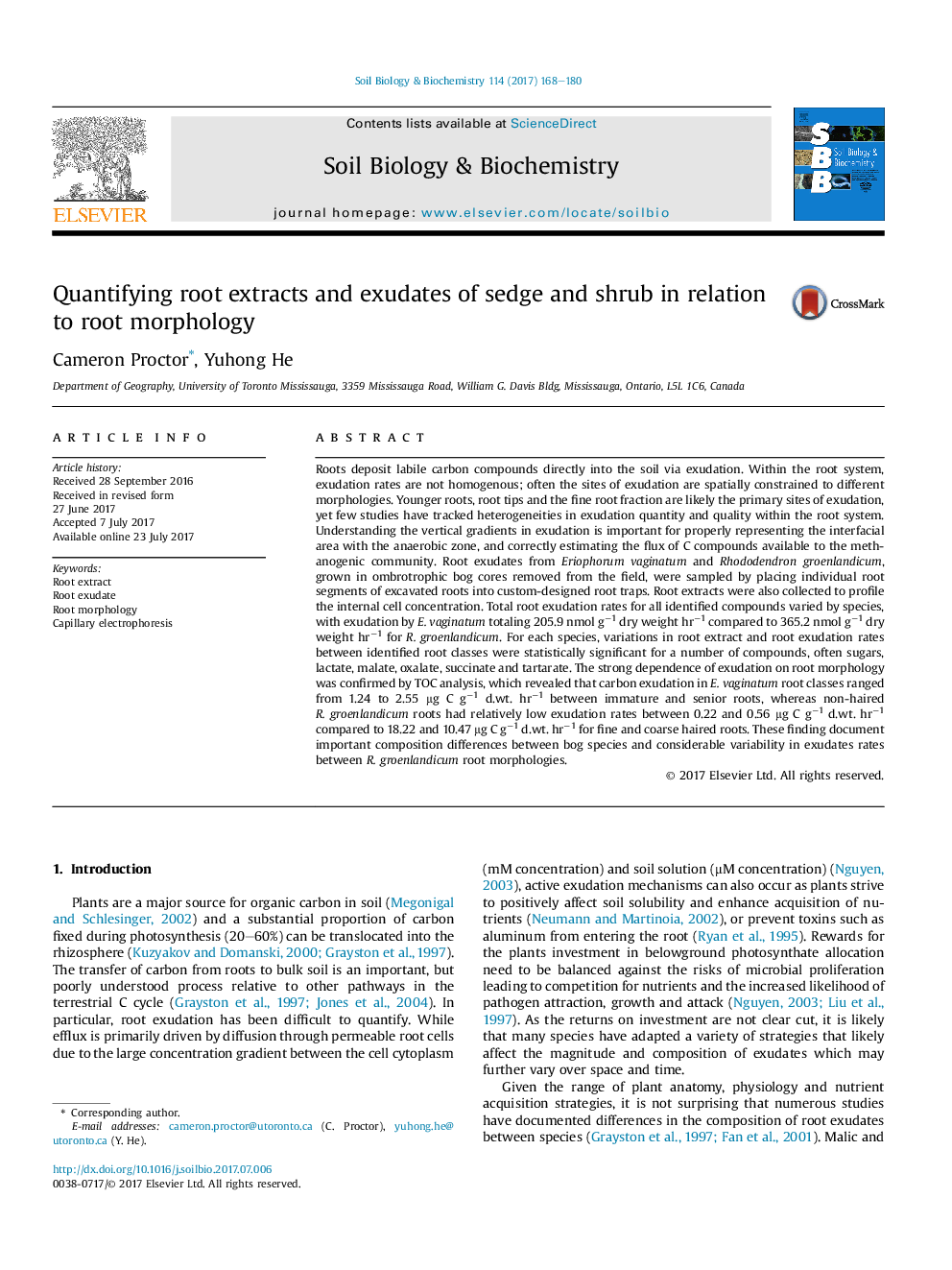| کد مقاله | کد نشریه | سال انتشار | مقاله انگلیسی | نسخه تمام متن |
|---|---|---|---|---|
| 5516317 | 1542570 | 2017 | 13 صفحه PDF | دانلود رایگان |
- Root Extracts and exudates of E. vaginatum and R. groenlandicum were quantified.
- Profiles of anions via capillary electrophoresis documented 37 compounds.
- Exudate composition and quantity differed between species.
- Within species extracts and exudates varied by root morphology.
Roots deposit labile carbon compounds directly into the soil via exudation. Within the root system, exudation rates are not homogenous; often the sites of exudation are spatially constrained to different morphologies. Younger roots, root tips and the fine root fraction are likely the primary sites of exudation, yet few studies have tracked heterogeneities in exudation quantity and quality within the root system. Understanding the vertical gradients in exudation is important for properly representing the interfacial area with the anaerobic zone, and correctly estimating the flux of C compounds available to the methanogenic community. Root exudates from Eriophorum vaginatum and Rhododendron groenlandicum, grown in ombrotrophic bog cores removed from the field, were sampled by placing individual root segments of excavated roots into custom-designed root traps. Root extracts were also collected to profile the internal cell concentration. Total root exudation rates for all identified compounds varied by species, with exudation by E. vaginatum totaling 205.9 nmol gâ1 dry weight hrâ1 compared to 365.2 nmol gâ1 dry weight hrâ1 for R. groenlandicum. For each species, variations in root extract and root exudation rates between identified root classes were statistically significant for a number of compounds, often sugars, lactate, malate, oxalate, succinate and tartarate. The strong dependence of exudation on root morphology was confirmed by TOC analysis, which revealed that carbon exudation in E. vaginatum root classes ranged from 1.24 to 2.55 μg C gâ1 d.wt. hrâ1 between immature and senior roots, whereas non-haired R. groenlandicum roots had relatively low exudation rates between 0.22 and 0.56 μg C gâ1 d.wt. hrâ1 compared to 18.22 and 10.47 μg C gâ1 d.wt. hrâ1 for fine and coarse haired roots. These finding document important composition differences between bog species and considerable variability in exudates rates between R. groenlandicum root morphologies.
Journal: Soil Biology and Biochemistry - Volume 114, November 2017, Pages 168-180
